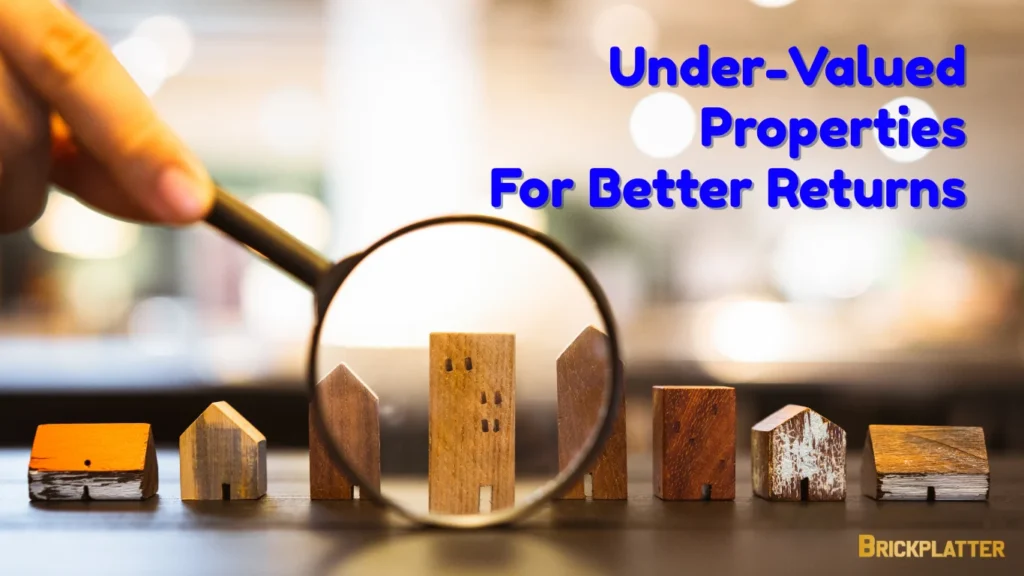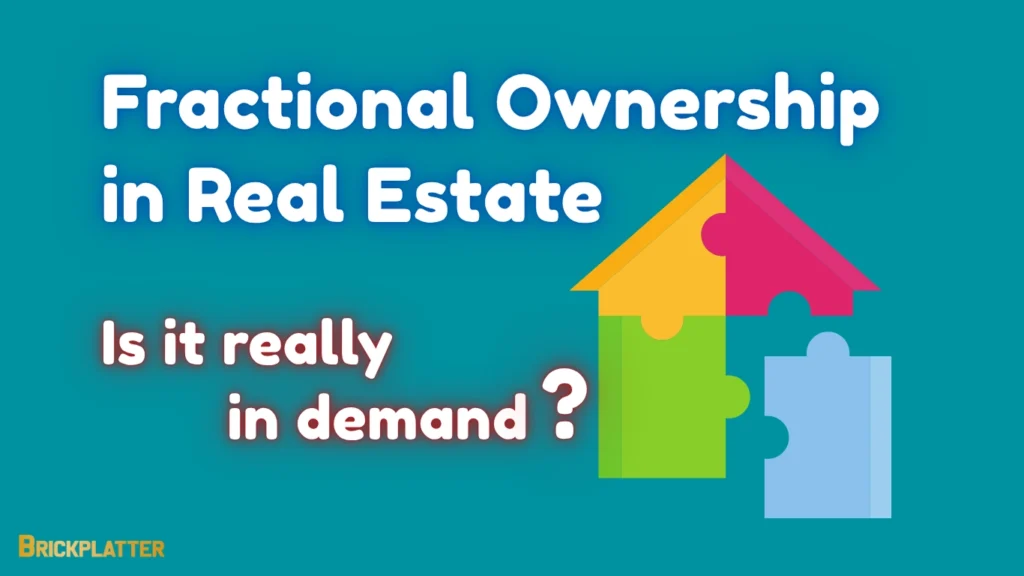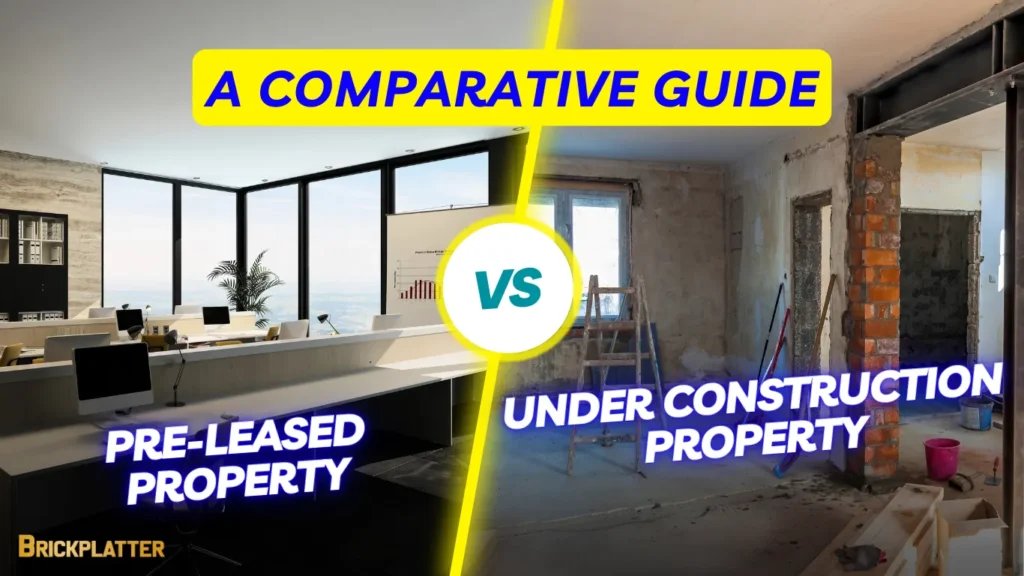How BrickPlatter Curates Prime Pre-Leased Properties for You
Investing in real estate has long been seen as a secure path to wealth creation – but finding the right property can be daunting. Between assessing location, tenant reliability, legal paperwork, and rental yield, even experienced investors struggle to find income-generating assets. That’s why at BrickPlatter, we make it our mission to offer you only the most carefully vetted, pre-leased properties – assets that are designed to deliver consistent rental income and strong capital appreciation. That’s where BrickPlatter comes in. As India’s next-gen fractional real estate platform, we specialize in identifying and offering only pre-leased, investment-grade properties that deliver stable returns and long-term value. At BrickPlatter, property curation isn’t guesswork—it’s a data-backed, expert-driven process. We combine market intelligence, legal due diligence, and financial vetting to select properties that are not only premium but also offer monthly rental income from day one. Whether you’re an NRI, a first-time investor, or an HNI looking to diversify, our platform ensures you get access to carefully chosen commercial and residential real estate—minus the hassle of managing it yourself. But what exactly goes on behind the scenes before a property is listed on the BrickPlatter platform? Let’s break it down. Identifying High-Demand Locations Location is the foundation of any successful real estate investment. Our team conducts in-depth market research to shortlist Tier-1 and emerging Tier-2 cities that offer: High tenant demand Business and infrastructure growth Low vacancy risk Cities like Mumbai, Navi Mumbai, Pune, Bengaluru, Hyderabad, and Delhi NCR often top our list due to their robust commercial activity and real estate performance. We also explore strategic holiday destinations like Goa, Lonavala, and Udaipur for diversified offerings in holiday homes and resorts. Selecting Grade-A Properties with Strong Lease Agreements Once a location is finalized, we evaluate commercial and residential buildings that meet strict quality and compliance parameters. Our curation team ensures that each property: Is Grade-A or investment-grade Has 100% occupancy or reliable tenant pipeline Is pre-leased to reputed tenants (corporates, banks, MNCs, retail chains) Has lease terms of 3+ years with escalation clauses We avoid properties with unstable tenancy or legal uncertainties. This ensures you invest in income-generating properties from Day 1. Explore listings: https://brickplatter.com/fractional-ownership-properties/ Due Diligence: Legal, Technical, and Financial Before listing any property, we put it through a multi-layered due diligence process: Title Check – To ensure there are no ownership disputes or encumbrances. Compliance Check – To verify adherence to RERA, fire NOCs, occupancy certificates, etc. Lease Agreement Review – To assess rent terms, lock-in periods, and escalation clauses. Valuation & Rental Yield Study – We compare current rent with market benchmarks to ensure healthy yields (typically 7–10% per annum). This thorough background check protects your investment and helps you build a risk-mitigated portfolio. Structuring via SPVs for Seamless Ownership Every selected property is placed under a Special Purpose Vehicle (SPV)—a legal entity that allows multiple investors to co-own the property in a structured and transparent manner. With SPV-based ownership: Each investor receives shares proportionate to their investment You enjoy passive income via rental distribution There is a clear exit framework in place (sale or share transfer) This model enhances security and ensures compliance with Indian real estate investment norms. Want to learn how it works? https://brickplatter.com/how-it-works/ Real-Time Platform Listings with Performance Insights Once curated and verified, the property is listed on BrickPlatter’s property dashboard with: Investment summary Property images and videos Rental yield, lease terms, and IRR forecast Tenant profile and property age Exit strategy options Investors can evaluate and book their fractional share online—100% transparent, digital, and secure. Read more insights on our blog: https://brickplatter.com/blogs/ Property Management Post-Investment Curation doesn’t stop after the sale. BrickPlatter continues to manage your property with: Monthly rent collection & disbursement Tenant relationship management Periodic maintenance & legal compliance Annual performance reports This allows you to focus on wealth creation without the burden of property management. “At BrickPlatter, we believe real estate should not be limited to the ultra-wealthy. By carefully curating pre-leased properties and offering fractional access through SPVs, we’re making institutional-grade assets available to everyday investors. Our aim is to help individuals, NRIs, and HNIs build smart portfolios with reliable passive income and asset growth potential.” — Kamlesh Dubey, Co-Founder, BrickPlatter Start Investing in Curated Pre-Leased Assets Today Ready to make your money work smarter? With BrickPlatter, you can invest in curated, income-generating properties with complete transparency and ease. Whether your goal is to earn passive monthly income, diversify your portfolio, or co-own high-demand assets with just ₹10 lakhs, our team has done the heavy lifting for you. Start your fractional investment journey today and take the first step toward building wealth through real estate – without the full ownership burden. Related Posts All Posts Top Benefits of Fractional Ownership for First-Time Investors May 16, 2025/Read More Pre-Leased vs Under-Construction Properties – A Comparative Guide May 16, 2025/Read More
How BrickPlatter Curates Prime Pre-Leased Properties for You Read More »








